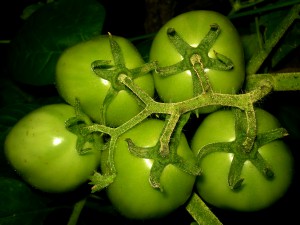Eagle Genomics held their 3rd annual Symposium in Cambridge on 21st March 2013, offering a wide variety of talks under a common theme of big data and cuts in Bioinformatics. These were interspersed with breaks for very useful networking conversations.
It is always a joy to meet our authors at such meetings and I was pleased to meet the first author of a sugar beet paper published a year ago in BMC Genomics. Her presence (and others from the plant world) marked an increased emphasis on plant genomics over the previous two meetings held in 2011 and 2012.
The talks ranged from using next generation methods for identifying old and ancient samples in a museum environment to pre-competitive alliances and the development of green computing software. The full agenda is available here.
The keynote speaker was John Wise of the Pistoia Alliance (a precompetitive alliance of life science groups that aims to lower barriers to innovation) –whose theme was “Open Innovation does work and the Pistoia Alliance shows the way.” He managed to include Isambard Kingdom Brunel, physics and much more into his thought-provoking talk. Part of his thesis is that the difference between the physics and Pharma sector is that the management in the field of physics realized early on that there was a fundamental need for computers.
Another talk describing precompetitive alliance was that by our first speaker from Janssen describing eTRIKS (European Translational information and knowledge management services) project, a collaboration funded by the EU framework project and a group of pharmaceutical companies (efpia – European federation of pharmaceutical industries and associations). This initiative well responds to the need to pool resources and collaborate in order to progress in this highly expensive genomics field with big data and bigger cuts. This tool is based on the tranSMART project platform for which the next round of development is being coordinated by the tranSMART foundation working with eTRIKS and others to achieve ‘… one global informatics-based analysis and pre-competitive data-sharing platform for clinical and translational research‘.
Rutger Vos from the Naturalis Biodiversity Center in the Netherlands Holland described the Natural History Museum which stores archetypal species. He referred to recent genomics analysis of an ‘old tomato’ which is partly in response to the belief that tomatoes are less sweet now than previously. They are investigating whether this is likely to be true (c.f. Science article on tomato ripening) by examining varieties so old that they are pre-industrialization. Currently they have data for 150 genomes.

He described some of the additional complexities associated with ancient DNA such as their fragmented nature and the likelihood of a break occurring post an A or G. Substitutions also start to appear which result from deamination; they are not Single Nucleotide Polymorphisms (SNPs).
The only speaker from a University environment was Katy Wolstencroft who described the SEEK platform which underpins the SysMO-DB project aimed at ‘…finding, sharing and exchanging Data, Models and Processes in Systems Biology.‘ This is a web based platform for use within large consortia in the first instance and for later distribution. It is a Standards compliant enterprise.
All the speakers brought something new to the theme of big data and bigger cuts but none more so than Jiye Shi (UCB) who provided us with a pharmaceutical supported initiative to provide green computing. The software he described is developed to use spare cycles on mobile devices, which are now almost as powerful as desktop machines.

The next phase of the project is to test the downloadable App with University students on their mobile devices to identify any performance or heating issues.
This was an information-filled day showing that the combined challenge of Big data and Bigger Cuts can lead to positive results as shown by the degree of collaboration, interaction and sharing that was described in the Symposium. BMC Bioinformatics and BMC Genomics are eagerly awaiting the 4th Symposium.
Comments